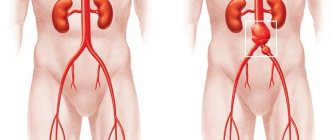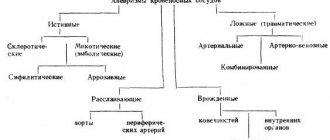Brain cancer is characterized by abnormally rapid division and transformation of brain cells, damage to nerve tissues, blood vessels, and cerebral membranes occurs. Modified cells are carried into the brain by the bloodstream and lymph flow from internal organs affected by cancer. Gradual germination of tumors occurs, brain function is disrupted, vegetative symptoms appear, the patient’s psyche is disturbed, and intellectual abilities decrease.
At the initial stages, the pathology is asymptomatic, the clinical manifestations appear at stage 4 of oncology, which is difficult to treat. At the first signs of cancer, the patient will experience pain and dizziness, nausea, vomiting and visual dysfunction. These symptoms are observed during hypertensive crisis, migraine, and headache also occurs due to osteochondrosis. Therefore, in the treatment of malignant brain tumors, the qualifications of a specialist who will conduct differentiated diagnostics and establish the correct diagnosis are important.
Common initial signs of brain cancer
Brain cancer is a fairly rare disease - 1.5% of all types of malignant neoplasms.
The most striking sign of brain cancer is headache, which intensifies and worsens with any physical stress . Frequent headaches in the morning or at night do not stop even under the influence of medications. When standing, the sensation of pain fades somewhat. Movements of the body and neck only increase the pain. As the disease progresses, the pain in the head does not stop. But even this symptom is often absent in patients with early stages of brain cancer.
The initial stage of the disease may be asymptomatic.
Another symptom – dizziness – can also be considered a sign of brain carcinoma, especially if it is felt regardless of the patient’s position and does not go away for a long time. Dizziness is explained by transformation in the pituitary gland or increased intracranial pressure due to a tumor.
Common signs of brain cancer include a feeling of weakness in the limbs and joints. As the disease progresses, this symptom can develop into paresis or even paralysis.
An accompanying symptom of brain cancer is blurred vision. This symptom can manifest itself in the form of “floaters” in front of the eyes, spots and soreness of the eyeball. Nystagmus of the eyeball is also considered a frequent sign of a tumor at an early stage.
Diagnostics
If a brain tumor is suspected, blood tests are prescribed - general and biochemistry. Instrumental studies are performed: angiography of cerebral vessels, electroencephalography, computed tomography, magnetic resonance imaging, radioisotope scanning.
A biopsy is performed to take a sample of cerebrospinal fluid. Consultations with specialists are prescribed, including an ophthalmologist, who can detect symptoms of a brain tumor in the earliest stages.
Leading clinics in Israel
Assuta
Israel, Tel Aviv
Ikhilov
Israel, Tel Aviv
Hadassah
Israel, Jerusalem
Hearing problems can be alarming. They appear as unexplained deafness on one side or ringing in the ears.
The headache may be accompanied by nausea and vomiting, which appears regardless of food intake. In vomit, which may occur after eating, there are undigested pieces of food; the presence of bile may indicate that the patient has not eaten for a long time. The main feature of this symptom is the lack of relief after vomiting.
Video on the topic:
Other signs that a patient may experience with brain cancer may include:
- spasms of the limbs. The whole body, not just the limbs, can be involved in the process, and in some cases the patient may lose consciousness with a short-term cessation of breathing;
- memory problems;
- loss of ability to parse received information;
- loss of concentration;
- perception of events in the wrong way.
To all of the above, you can add such symptoms as: causeless changes in pressure, changes in pulse, sweating, pallor and swelling of the skin or the appearance of abundant spots on it.
Important! If a person exhibits several of the above symptoms, and the pain is prolonged, intense, and more pronounced on one side, then the suspicion of brain cancer is justified.
Often a brain tumor begins to manifest itself in the initial stages with nonspecific symptoms. There are similar signs in some other diseases that are associated with the activity of the central nervous system, the muscular system, and internal organs.
On a note! Brain cancer has the ability to spread to nearby tissues, negatively affecting the functioning of brain structures. This is expressed by psychological, vegetative and intellectual disorders.
All signs of brain pathology are divided into two broad groups:
| General cerebral signs | Focal signs |
| Disturbance of sleep and wakefulness patterns. A person sleeps most of the time. After waking up, he is unable to orient himself in time and space, his thoughts are usually confused, and there is no recognition of the people around him. | When the tumor is localized in the motor cortex, paresis or paralysis is observed. Usually only part of the body is affected. Various types of hallucinations: auditory - if the temporal part of the brain is involved in the tumor process, visual - when the tumor is located in the occipital region, olfactory (inability to detect odors) - when the anterior parts of the frontal lobe are affected. |
| Headaches of a bursting nature. After using diuretics, the pain decreases, but does not go away completely. The maximum pain occurs in the morning hours. This is due to swelling of the meninges during sleep | Vision deteriorates and there may be double vision, difficulties appear in determining the shape and size of surrounding objects, as well as problems with their recognition. Running pupil syndrome appears. |
| Negative reaction of the organs of vision to light: sudden closure of the eyelids, pain in the eyes, tears, etc. | Inability to write. Poor understanding of the meaning of the text. Difficulties arise with thinking. Psychological disorders are observed: irritability, aggressiveness. |
| Dizziness. The patient experiences a feeling of “wobbly feet,” when the soil underfoot feels soft or sinks. | Virtually no coordination of movement: unsteadiness when walking or standing. Lack of sensation in some areas of the body |
| Autonomic disorders: increased sweating, frequent fainting due to low blood pressure. When the pineal or pituitary gland is involved in the cancer process, hormonal disruptions may occur. | |
| Hearing problems. Sometimes - deafness. Inability to recognize or pronounce certain sounds or words |
Benign brain tumor: how it manifests itself
If you experience the following persistent symptoms, you should contact your doctor:
- headache. If your head starts to hurt badly in the morning, sometimes you don’t get enough sleep because of a persistent headache, the pain can occur like an “explosion”, accompanied by vomiting, in some cases with very severe nausea;
- the head is often dizzy, and during physical activity, coughing, sneezing there is a sharp pain;
- double vision, impaired vision, hearing, increased body temperature, accompanied by headaches of varying intensity, impaired coordination, and memory deterioration.
You should consult a doctor even if you have persistent headaches, which can be a symptom of various diseases.
Primary neurological signs of cancer
Early symptoms of brain cancer include neurological and mental disorders, which are expressed by apathy, followed by short-term euphoria, memory loss and causeless aggression. Such symptoms may include: confusion, disturbances in orientation in space and time, various manifestations of personality transformation, visual and auditory, rapidly increasing signs of complete disorganization of a person’s mental activity.
Video on the topic:
Causes of tumor
The appearance of a tumor is a consequence of abnormal cell division. And what is the reason that makes cells behave this way, where does a cancerous tumor in the brain come from? Unfortunately, scientists cannot yet give an exact answer to the question “what causes brain cancer.” It is only possible to clearly identify some factors and the main causes that can cause a brain tumor:
- genetic inheritance. If one of your close relatives suffered from this disease, then you are at risk for this disease. Although there is no direct evidence of this, there are often cases when one of the relatives already had this disease, which you can “inherit”;
- pathologies in the body. Chemotherapy, organ transplantation, long-term use of antibiotics - all this can serve as an impetus for the formation of a tumor;
- injuries. The appearance of a tumor can be triggered by a bruise, injury, even received in early childhood - any swelling, even many years ago, can be the root cause;
- bad habits. Drinking alcohol in large quantities and smoking can lead to mutations in cells, and this can result in their degeneration into malignant ones;
- radioactive exposure, chemical poisoning. People whose work is in one way or another connected with radiation complete the risk group for this disease. This also includes workers in the chemical industry, whose body, due to the work they do, is saturated with harmful compounds that can also have an impact on the development of oncology.
Causes of brain cancer
The exact causes of the disease are unclear, but there are a number of factors that precede the onset of brain cancer:
- long-term exposure to radioactive radiation;
- regular contact with chemicals;
- cranial trauma;
- hereditary predisposition;
- alcohol and tobacco consumption;
- diseases that affect the body’s protective functions (primarily HIV).
The risk of disease is also high in the following categories:
- children under 8 years old;
- adult patients over 65 years of age;
- liquidators of events at the Chernobyl nuclear power plant;
- patients who have had internal organ transplants;
- undergoing chemotherapy for the treatment of any type of tumor.
Brain tumor: brain stem
Certain brain tumors, the causes of which are little known, form in the brain stem. These include malignant and benign glial tumors. This type of tumor most often affects children. The neoplasm causes damage to the pathways of the brain stem, causing motor and sensory disorders, cerebellar disorders, and damage to the cranial nerves. Benign glial tumors of the brain stem are characterized by slow growth, which can last for decades; the malignant form of the tumor is characterized by rapid growth, depending on the degree of malignancy from several months to a year or two years. Brain stem tumors are often inoperable. Symptoms of a brain stem tumor in children include strabismus, hearing loss, twitching of the eyeballs, facial asymmetry, and muscle weakness.
Types of brain cancer and its stages
There is a large qualification of the disease. Depending on the location, brain cancer can be:
- intracerebral . The tumor is located in the brain;
- extracerebral . In this case, cancer cells do not affect the brain cavity, but its membranes and cranial nerves;
- intraventricular . Cancer spreads to the cerebral ventricles.
Based on etiology, the following brain diseases are distinguished:
- primary _ Arising due to mutation of cells located in the skull. Abnormal changes may affect nerve fibers, bones, blood vessels that supply the brain, etc. Such tumors are divided into 2 large groups: gliomas and non-gliomas;
- secondary _ These tumors develop against the background of metastases from other internal organs.
Primary tumors are of the following types:
- astrocytoma . Cancer arises from the brain's supporting cells, astrocytes. Men are more susceptible to this type of disease;
- oligodendroglioma . A rather rare type of pathology, develops due to a mutation of oligodendrocytes;
- mixed gliomas . This type is most often diagnosed. The reason is the transformation of oligodendrocytes and astrocytes;
- CNS lymphomas . With this anomaly, cancer cells are located in the lymph vessels that are located in the skull. This type of tumor often occurs against the background of weak body defenses or after transplantation of internal organs;
- pituitary adenomas . This cancer rarely becomes malignant. It is more often diagnosed in women and is characterized by disruptions in the functioning of the endocrine system: increased hair growth, prolonged wound healing, and obesity. In children, such a neoplasm manifests itself in the form of gigantism;
- meningiomas . This cancer quickly develops from mutated cells of the arachnoid membrane of the brain and can metastasize;
- ependymoma . The cells that are responsible for the production of cerebrospinal fluid mutate. They come in the following types: highly differentiated. They grow rather slowly and metastasis does not occur;
- moderately differentiated. The tumor grows faster than with highly differentiated neoplasms, but also does not cause metastasis;
- anaplastic. Tumor cells multiply quickly and metastasize.
Radiosurgical treatment of brain tumors, including gliomas, in Israel, carried out using CyberKnife technology, eliminates the need for any invasive head frame (as in Gamma Knife treatment) and does not require anesthesia.
There are 4 stages of cancer:
Stage 1. Abnormal cells are non-aggressive and do not tend to spread. Due to mild symptoms, diagnosing the disease at this stage is problematic.
Stage 2. Cell growth begins and cell degradation increases. The tumor process involves nearby blood vessels, tissues, and lymph nodes. Surgery does not always lead to the desired results.
Stage 3. Patients complain of frequent severe headaches, dizziness, and fever. Sometimes they may experience disorientation in space, decreased vision, and nausea and vomiting are common. The prognosis for this stage of the brain is generally unfavorable; the tumor is often not operated on.
Stage 4. Headaches become intense and constant, and are difficult to stop. Fainting, hallucinations, and epileptic seizures may occur. Due to the active spread of metastases, there may be disturbances in the functioning of the lungs and liver. The tumor at this stage is inoperable, treatment is aimed at relieving symptoms.
Don't waste your time searching for inaccurate cancer treatment prices
*Only upon receipt of information about the patient’s disease, a representative of the clinic will be able to calculate the exact price for treatment.
Treatment
Before identifying brain cancer and making a final diagnosis, the patient undergoes a complete examination. Treatment of brain cancer requires an integrated approach, regardless of the stage of malignancy. Doctors gather a consultation and develop therapeutic tactics. When brain cancer is detected, the following specialists are involved in treatment:
- therapist;
- neurologist;
- neurosurgeon;
- oncologist;
- radiologist;
- rehabilitologist.
For brain cancer, treatment tactics directly depend on the patient’s age, his general health and the degree of development of the oncological process.
The following methods are used as therapeutic methods to combat tumors:
- Radiotherapy.
- Surgical intervention.
- Radiation therapy.
- Drug therapy.
The most effective method is to remove the tumor, but due to the complexity of the location, surgery is not always possible. Successful removal of a brain tumor in the first stages is carried out. With 3 and 4, removal is extremely difficult.
Surgery
Benign tumors are successfully removed surgically. The neurosurgeon, together with the oncologist, performs endoscopic surgery or craniotomy to excise the tumor. The accuracy and qualifications of doctors are important, because the slightest mistake can cost the patient the loss of vital functions. In case of a malignant course, removal is impossible due to the scale of the spread of the process and the involvement of neighboring organs.
When performing surgery at stages 1 and 2, the formation is completely removed, which contributes to the patient’s complete recovery. Symptoms disappear after excision of the benign neoplasm. Regardless of the nature of the tumor, the removed material is sent for histological examination.
To reduce the risk of damage to healthy tissue, stereostatic radiosurgery is used. This method involves delivering a stream of rays directly to the location of the tumor. Modern techniques significantly shorten the rehabilitation period.
Before surgery, the patient is prescribed a course of drug therapy, including:
- anticonvulsants;
- steroidal anti-inflammatory drugs.
To reduce intracranial pressure, shunting is performed.
Radiation therapy
Treatment of brain cancer with radiation therapy is applicable to patients who are unable to undergo surgery, or after surgical treatment to prevent a possible relapse.
At stages 3 and 4, radiation therapy is the main treatment method for patients. Contraindications to the complex procedure are pathologies of the cardiovascular system.
The goal of radiation therapy is to destroy malignant cells, which are the provocateurs of the re-development of the disease. During the procedure, not only cancer cells, but also healthy cells die, so the patient’s condition requires more careful monitoring. The dose of radiation supplied is selected by the doctor. It all depends on the location of the tumor process and the age of the patient.
Radiation therapy is carried out using 2 methods:
- External radiation therapy. It involves exposing the patient’s body to high doses of radiation for several minutes. The procedure is carried out 5 times a week, after each session the patient goes home.
- Brachytherapy. Carried out in a hospital setting. A radioactive component is injected into the tumor tissue, which promotes the disintegration of the tumor from the inside. The dose is selected depending on the size of the tumor; the rays should not affect healthy tissue.
Chemotherapy
This technique is not the basis of therapy for oncology. The fact is that chemotherapy has a detrimental effect on the function of hematopoiesis and the epithelial tissue of the digestive tract.
The chemotherapy regimen is selected by a specialist based on the size of the formation.
For therapeutic purposes the following is used:
- antimetabolites;
- alkylating group preparations;
- synthetic antibacterial agents.
A course of medication is prescribed. Medicines are administered by injection, taken orally, or delivered into the body using a cerebrospinal fluid shunt. Breaks are taken between procedures to evaluate the therapy.
Endoscopic treatment
Surgery using an endoscope allows you to remove the tumor without additional trauma to nearby tissues. The advantage of this method is the absence of incisions and a difficult postoperative period. Why be afraid to do craniotomy? Because no doctor will give you a 100% guarantee of the patient’s complete recovery. And with endoscopic surgery, interventions in the body are minimal. Pituitary adenoma is successfully removed. In this case, the endoscope is inserted through the nose (transnasal endoscopy). It is also possible to remove a cyst or hematoma if its size allows for intervention.
Cancer lesions in different lobes of the brain
Symptoms of brain cancer vary depending on what part of the brain is affected. With a tumor of the pituitary gland or brain stem, movement coordination problems occur, the ability to concentrate is greatly reduced, and double vision may occur. Other signs include an inability to determine the distance to an object and an unsteady gait.
Sometimes manifestations are possible in the form of difficulty moving the tongue, painful sensations when swallowing, as well as disturbances in the functioning of facial muscles or their paresis. When the cerebellum is damaged, these signs are added: spasms in the back of the head, nausea, vomiting, nystagmus.
Temporal lobe cancer
If the temporal lobes are damaged (one or both at once), the patient may experience auditory agnosia, mental impairment (which is expressed in a lack of understanding of what is said, the inability to take dictation, read, speech impairment), amnesia, anxiety and inexplicable fear. A patient with temporal lobe lesions may become depressed.
Other signs of temporal lobe damage may include:
- severe headaches,
- taste and olfactory distortions;
- causeless fainting;
- affective disorders such as exaltation;
- the so-called state of “déjà vu” (it seems that I have already seen this).
Occipital brain cancer
Lesions of the occipital part are expressed in visual impairment (the centers that correct its functions are located here). Agnosia is added to the decline in vision (the recognition process is disrupted) - the patient does not recognize colors, letters or objects in general. Inability to recognize letters causes impairment in the ability to write. There is a violation of orientation in the room, on the street, problems arise with the use of maps, watches, and diagrams.
When damage occurs to the parieto-occipital region of the brain at the border with the temporal lobes, the patient exhibits a violation of the memorization of words denoting objects.
Parietal lobe cancer
Cancer damage to this part of the brain causes disturbances in the perception and production of speech - aphasia. A disorder of motor coordination is also diagnosed, it becomes impossible to identify an object by touch, and the idea of the tactile image of an object is weakened (astereognosia). This symptom is caused by damage to the secondary cortical fields in the parietal lobe of the brain, which leads to a loss of the ability to analyze sensations.
The first clear sign of a tumor in the parietal lobe is a violation of ideas about one’s own body, which is expressed in a deceptive feeling of the presence of several limbs, an increase or decrease in one’s parts.
Frontal lobe brain cancer
Tumors of different parts of the frontal lobe of the brain affect the mental state of the patient. This part of the brain is responsible for the regulation of intelligence, the process of performing one or another action, and is responsible for a person’s ability to make decisions. In practice, this can be motor persistence (the patient cannot interrupt the action in time and continues to perform it), for example, instead of one circle, the patient will draw a whole bunch of circles.
Spelling will also become a problem, especially with a homogeneous combination of letters. The patient's speech is greatly impoverished, he becomes too silent, or, conversely, too verbose. Typically, the emotional state of such a person becomes inadequate and is characterized by psychomotor agitation. In addition, the patient finds himself disoriented in time, his location, and even in his own personality.
Malignant brain tumor: how to identify
A rapidly growing malignant brain tumor causes numerous symptoms. Clinical manifestations depend on the location of the tumor and its size - the larger the tumor, the more disturbances it will cause. In the cerebral hemispheres, malignant gliomas are more common; the cerebellum and brainstem are more often affected by benign tumors. The tumor compresses an area of the brain, causing swelling of the brain along the periphery of the malignant tumor; it can press on the cranial nerves - all these factors lead to the development of impaired movement of the eyeball, strabismus, and constant headaches.
The development of a rapidly growing tumor in the frontal region is often manifested by characteristic disorders of higher brain functions. Patients who were previously active and cheerful individuals become inhibited, inactive, and apathetic-abulsic syndrome develops. With the basal location of the tumor, the opposite manifestations appear: the patient is disinhibited, untidy, loves cynical jokes, fools around, is gluttonous, and is constantly in a state of euphoria. Malignant and benign tumors have similar symptoms depending on the location and size of the tumor. Most often, a brain tumor that grows in size, compresses, or grows into brain tissue is characterized by the following symptoms:
- loss of coordination;
- unpredictable mood swings;
- epileptic seizures;
- impaired motor skills;
- personality change.
Localization in the temporal lobe is manifested by symptoms:
- loss of vision in one eye (area affected by the tumor);
- epileptic seizures, loss of consciousness;
- hallucinations.
The malignancy of a tumor is determined by studying the structures of the tumor and the degree of its germination into the tissue. If possible, tumor tissue is taken for a biopsy, and the histological structure of the tumor is examined.
Diagnosis of the disease
An accurate diagnosis is made using the following types of examination:
- MRI and CT. They help to find the exact location of the tumor or metastasis, the size of the tumor;
- positron emission tomography. This type of diagnosis helps to identify distant metastases in brain tissue;
- angiography (CTA, MRA) examines the blood vessels of the brain to assess the risk of bleeding during surgery;
- radioisotope scanning. This study specifies the location of the tumor and its size, and also gives doctors detailed information about the organ;
- biopsy together with craniotomy. A portion of the cancerous tumor is removed for examination.
Tumor stages
Due to the rapid proliferation of cancer cells, the transition from one stage to another occurs rapidly and the boundaries between them are blurred. It is important to identify the disease as early as possible, because if the process is advanced, it is impossible to cure the patient. Sometimes brain cancer can only be identified after an autopsy.
Stage 1
This is the mildest degree of the pathological process. The number of tumor cells is small and they multiply slowly. Symptoms are mild, a person may complain of weakness, fatigue, dizziness, and periodic headaches. If diagnosed early, brain cancer can be completely eradicated with surgery, but few people associate these symptoms with the tumor. The causes of malaise are attributed to decreased immunity or chronic diseases.
Stage 2
The tumor gradually progresses and connects with other brain structures. The clinical picture is characterized by headaches, epileptic seizures, vomiting, and digestive disorders. At this stage, the patient may be saved by surgery, but the chances of recovery are reduced.
Stage 3
Impaired mobility of the limbs, memory and attention disorders, changes in speech, hearing, and vision appear. There is a feeling of numbness in the limbs, a disorder of tactile sensitivity. When the vestibular apparatus is damaged, an unsteady gait appears and the person is unable to maintain body balance. A characteristic symptom of this stage is horizontal nystagmus - pupils running from side to side while the body is motionless. Surgical treatment at stage 3 gives good results when the tumor is located in the temple area.
Stage 4
At the last stage, surgery is not performed; palliative treatment is prescribed in the form of chemotherapy, radiation therapy, and medications with an analgesic effect. Medical efforts are aimed at alleviating the patient's suffering. Life expectancy depends on the state of immunity and functional activity of the person himself. The disease ends with the development of coma.
Diagnosis
In order to accurately diagnose and determine the type of tumor, doctors need to take the cells themselves for analysis - that is, they need to do a biopsy.
First you have to determine where exactly the tumor is located. It helps to do an MRI or CT scan of the brain. Tomography shows where the tumor is located, what its size is, whether there are areas of dead tissue (necrosis) and traces of hemorrhages next to it. Tomography is also used to determine how much the tumor has damaged surrounding tissue.
A type of diagnostic procedure called positron emission tomography (PET) also provides a lot of information about the tumor. It tracks how radioactively labeled sugar moves through the brain. Rapidly dividing tumor cells absorb it much faster than healthy tissue. PET is often prescribed as an adjunct to MRI or CT.
In order to assess the condition of the blood vessels feeding the tumor, MRI angiography is done. A spinal puncture makes it possible to determine the presence of special tumor markers or even cancer cells themselves.
Dear readers, if you would like to share a link to this article with friends on other resources, you can do this in one click. Click on the appropriate buttons that you see just below, and the links will appear automatically.
Did you like the article? Share with friends on social networks:
This blog is read and used by 6,939 adherents of a healthy lifestyle and uses its advice and recommendations, so their health is in order, their mood is good, and their work is going well. Read it too.
I agree to the newsletter and accept the privacy policy.
You may also be interested
The Mystery of Adoption
For both the adoptive parents and the “abandoned” child, the secret of adoption...
93 Read more
Rash on hands in the form of pimples - harmless and not very
Good day, dear readers of Alexey Shevchenko’s blog “Healthy image...
20 Read more
What is sodium thiosulfate used for? This can be done...
Good day, dear readers of Alexey Shevchenko’s blog “Healthy image...
4 Read more
The Lenten table is still more for the soul
Dear friends! Hello and stay healthy. Contents: About the post, how...
97 Read more
Development process and types of disease
All brain cancers form directly from brain cells. Their formation is associated with practically uncontrolled cell division.
The tumor itself greatly increases in size and spreads to all the brain tissues that are adjacent to it. Of course, tumors that are benign cannot metastasize to other organs, but are localized exclusively in the affected part of the brain. But due to the fact that the skull is small, this tumor develops and becomes cancerous.
It is customary to divide the disease according to two main criteria:
- Primary view. In this case, a brain tumor is formed directly from the tissues and meninges.
- Secondary view. A tumor is formed when metastatic cells exist in neighboring organs.
All cancer symptoms related to a brain tumor are usually divided based on the composition of the cells. There are more than 100 different types of this disease. They, in turn, are combined into 12 special categories.
The most common are:
- neuroepithelial, which are usually found in almost 2/3 of all patients. Formed from tissues in brain cells;
- meningiomas, which are formed under the influence of division of the lining of the brain;
- pituitary, which are formed from the process of cell division of the pituitary gland;
- the lesions are located outside the brain, which indicates the metastatic nature of the neoplasm;
- dysembryogenetic, which are formed during the process of incorrect cell division in other organs.
A brain tumor, one way or another, differentiates from healthy cells. When the level of identity is high, it is easy to diagnose the disease. When diseased cells differ from healthy ones, disease occurs very quickly.
When not one, but several levels of differentiation are identified in a tumor, then the process of disease development is determined by the infected cells.
Classification of tumors that affect the brain
Brain tumors can be classified like all types of neoplasms:
- Benign tumors grow slowly, over decades, and are made up of cells that retain their original characteristics, except for those that invade other organs. Their danger is mainly due to the fact that they can put pressure on neighboring organs and tissues.
- Malignant tumors grow quickly, over a period of several months, and, in addition, are composed of cells that have a form and function completely different from the original one, and can also invade and destroy other organs and tissues that are far from this source, resulting in the appearance of , so-called metastases.
- Gliomas. This includes all those that arise from glial cells (astrocytes, oligodentrocytes). It is clear that different types of glial cells cause different types of cancer. The most common are those that come from astrocytes, that is, astrocytoma. Gliomas that arise from several types of cells can also be observed.
- Glial tumors. There are tumors that arise not from glial cells, but from cells surrounding the nervous tissue. This category, for example, includes intracranial meningiomas arising from the meninges.
- Metastatic tumors. They are formed from cancer cells that enter the skull from other organs where the tumor originally appeared. Most often, metastases appear in the brain from melanoma (epithelial cancer), lung cancer, breast cancer and, to a lesser extent, intestinal or prostate cancer.
Causes and risk factors
Brain cancer is a disease whose exact cause is very difficult to know . Some of the most significant factors in the development of this pathology include:
- heredity;
- race (more common among white people than among people of color);
- presence of bad habits.
Risk factors include:
- injuries and infections affecting the tissues of the brain and its membranes;
- exposure to radiation and carcinogenic substances, radiation exposure - for example, after the dropping of a nuclear bomb in Hiroshima in August 1945, the incidence of cancer increased 8 times;
- work in the chemical, electrical and oil refining industries;
- prolonged contact with X-ray equipment - the penetration of ionizing radiation into the body causes irreversible changes in cells, their uncontrolled reproduction begins, leading to the development of a tumor.
What else should you pay attention to?
When the brain functions abnormally, the following disorders may appear.
Sleep patterns are disrupted. Most often, a person becomes too sleepy. This is caused by constant fatigue and frequent headaches, which in the early stages are not severe, but still exhaust the nervous system. The patient tries to sleep most of his free time; he may sleep the entire day off, and then sleep all night and still wake up very tired the next morning. Immediately after waking up, it can be difficult for him to orient himself in space and time.
Morning headache. This condition is similar to a hangover, but has nothing to do with drinking alcohol. The pain is persistent and bursting. Short-term relief occurs only after taking a strong diuretic, due to which the swelling of the meninges that occurs during sleep subsides slightly.
Photophobia. Even light that is not too bright can be perceived as dazzling. The eyes water, the patient experiences cutting pain, and it is difficult for him to open his eyelids. In this case, the pupils may not react correctly to light: they may not contract in bright light or dilate in the dark.
Dizziness. This symptom is often accompanied by a feeling of “woolly legs.” It may also seem to a person that the floor under his feet is soft, and that he “falls in” with every step. Coordination of movements is also impaired: a person staggers when walking, like a drunk, and may suddenly fall out of the blue.
Problems with blood pressure. More often it is low and periodically drops to dangerous values (low pressure problems are described here and here). This may be accompanied by heavy sweating and short-term fainting.
Problems with recognition. It is difficult for a person to recognize the faces of even well-known people and family members. Difficulties arise with finding the right words, difficulties with writing and reading.
Speech suffers. The patient has difficulty understanding the words he hears. Diction worsens, speech becomes slurred.
Areas appear on the skin in which sensitivity is either sharply reduced or completely absent.
Severe emaciation. Even with abundant nutrition, the patient rapidly loses weight and becomes exhausted.
Prognosis and survival for brain cancer
The prognosis of the disease largely depends on the timely diagnosis and treatment. When talking about cancer, the term commonly used is “five-year survival rate,” which is expressed as a percentage.
In this issue, an important role is played by:
- histological structure of the tumor;
- location of the tumor;
- patient's age;
- presence of concomitant pathology;
- primary or secondary lesion.
Thus, if a primary tumor is detected and treated in a timely manner, five-year survival is observed in 60–80% of cases. With secondary brain cancer, the prognosis is less favorable. As a rule, this is explained by a weakening of the body's defenses as a result of the influence of the main oncological process occurring in the organ.
Gliomas (the most common primary brain tumors) are the most malignant; most patients die within a year of diagnosis.
As a rule, the younger the organism, the higher its chances of coping with the disease.
Against the background of existing treatment methods, the survival rate of children has increased significantly, which at the present stage is about 75%. Thanks to improvements in diagnostic and treatment methods, the five-year survival rate for certain types of brain cancer is increasing every year.
Modern medicine annually increases the survival rate of patients with brain tumors
Types of cancer tumors
- Benign - the cells themselves and tissues of formation are in one zone - they do not invade or damage nearby tissues. Because of this, such a tumor can be removed quite easily with proper treatment. The danger of such brain tumors is that in almost 90% of cases they turn into cancer.
- Malignant - the cells themselves are very different from healthy ones, grow quickly and endlessly divide. As a result, carcinoma tissue grows and penetrates healthy tissue, beginning to damage them and put pressure on neighboring areas of the brain, causing the patient to experience various painful symptoms. The process spreads faster with lower-grade brain cancer.
What treatments are there for brain cancer?
Therapy is possible in only three ways:
- surgical intervention;
- chemotherapy;
- radiation therapy.
Quite often, doctors prescribe combination therapy, which includes several treatment methods. Methods to combat brain cancer have a lot of features and nuances. For example, chemotherapy is an ineffective method and is used as an additional therapy. In most cases, surgical treatment is prescribed by removing the tumor. But sometimes this method cannot completely rid the patient of a tumor, since the tumor can be located in vital structures. In such cases, the tumor is partially removed, and the remaining part is treated with radiation.
Today, progress and development of new technologies allows operations to be performed without affecting vital areas with minimal injury to the patient. This category includes cyberknife and gamma knife.
The patient may also be prescribed cryosurgery. This method allows you to freeze the tumor using liquid nitrogen. This technique is quite effective when surgery is not possible.
Today, scientists are not standing still and are developing more and more new treatment methods that are less painful and do not require a long period of rehabilitation.
Symptoms of the disease
The clinical picture of any tumor process affecting the brain consists of general cerebral and focal symptoms.
General cerebral
General cerebral symptoms appear first; their occurrence is possible already in the early stages of the disease. These include:
- severe headache;
Regular, severe headaches may be a symptom of a brain tumor
- dizziness;
- disturbance of gait and coordination of movements;
- nausea, vomiting;
- sometimes confusion may occur.
All these signs are associated with increased intracranial pressure, increased volume of brain tissue and irritation of the walls of blood vessels and meninges.
The most characteristic symptom of the disease is headache. It has a high intensity, is practically not relieved by taking analgesics, and the attack can last in some cases from several hours to several days. Most often, severe headache is observed at night and in the morning immediately after waking up, which distinguishes it from other similar conditions.
The pain can be pressing, bursting, pulsating in nature, sometimes its intensity decreases with a change in position from horizontal to vertical. As the tumor grows, the frequency and duration of headache attacks increases.
It should be noted that if the tumor is localized deep in the brain tissue, there may not be a headache.
A common symptom accompanying morning headaches is nausea. It is not associated with food intake and is long-lasting. If nausea is accompanied by vomiting, it usually does not bring relief, as happens, for example, with peptic ulcer disease, which is also characterized by morning nausea and vomiting.
Another nonspecific sign of the disease is dizziness, which is caused by increased intracranial pressure or damage to the cerebellum. It begins gradually, an abrupt onset is not typical, the intensity of dizziness may increase or decrease due to changes in body position. Brain cancer is characterized by a connection between dizziness and headaches.
Other general cerebral symptoms include:
- general weakness and fatigue;
- decreased memory and attention;
- olfactory or gustatory hallucinations;
- feeling of numbness in the limbs;
- muscle weakness.
All these symptoms are not specific, but their combined manifestation should alert you and force you to undergo the necessary set of examinations.
Video: first signs of a brain tumor
Focal
Focal symptoms do not appear immediately, depend on the localization of the process and are associated with damage to the brain substance:
- When the frontal region is damaged, mental disorders come to the fore - inappropriate behavior, unmotivated actions, euphoria. Olfactory disturbances and olfactory hallucinations may occur—a person hears smells that are not actually there. In some cases, speech impairment occurs.
- When the tumor process is localized in the temporal region, the debut appearance of seizures, the development of a symptom complex of “already seen” or “already heard” are possible, and the occurrence of auditory hallucinations is typical. This symptom is called “déjà vu”; it consists in the fact that a person who has never been to a given place and situation before feels familiar with it, it seems to him that such an event has already happened in his life. Speech understanding may also be impaired, and memory and attention often suffer.
- Damage to the parietal lobe of the brain is characterized by a violation of superficial and deep sensitivity in one of the limbs (the opposite side of the lesion). The ability to read and count often suffers, and subsequently speech impairment is possible.
- In the case when the tumor process develops in the occipital region, there is a disturbance in general visual perception, loss of visual fields, and the appearance of visual hallucinations is possible. If this lobe is affected, there may be a violation of the “recognition” of objects - a person sees it, but cannot explain what this object is intended for, color perception changes.
- When the tumor process is localized in the cerebellum, which occurs quite often, movement disorders come to the fore - unsteadiness of gait, impaired coordination of movements and balance. Slow, “chanted” speech appears, and changes in handwriting are characteristic. When the cerebellum is damaged, trembling and uncoordinated movement of the limbs, severe muscle weakness, and impaired flexion and extension in the joints are noted.
Focal symptoms depend on which part of the brain the tumor began to develop in.
It should be noted that the above focal symptoms are characteristic of any damage to the brain substance - hemorrhage, ischemia, trauma, tumor. Detection of focal symptoms helps to suggest the location of the pathological process, and additional research methods are necessary to confirm the diagnosis.
In case of damage to the meninges, there may be no focal symptoms.
Brain tumor - life prognosis
When assessing a brain tumor, doctors never tell the patient how long they can live with it due to the unpredictability of the disease. Even a benign brain tumor reduces quality of life. Such formations are subject to mandatory removal, regardless of their origin and nature. When malignant tumors are detected, life expectancy depends on the size of the tumor, location, its stage and the presence of metastases in other organs.
With a primary tumor of grade 3-4, the probability of five-year survival does not exceed 30% (with complex, effective treatment). Patients with early diagnosed tumors have a higher chance of living longer: 60–80% of such patients live up to 5 years from the date of diagnosis.











